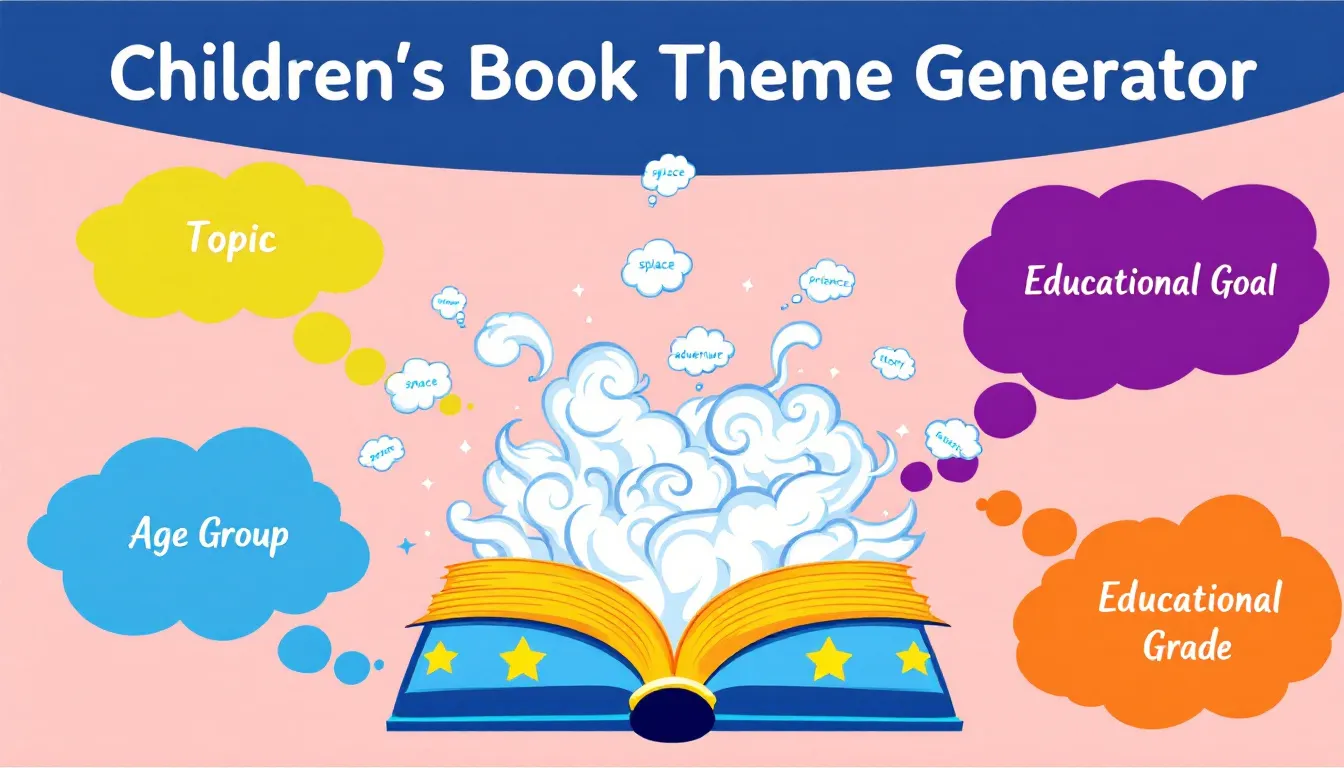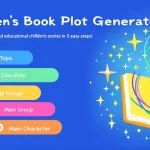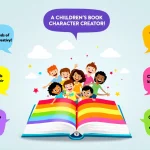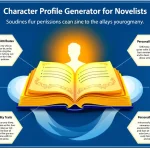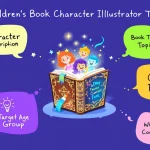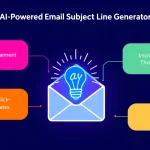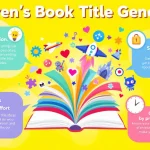Is this tool helpful?
How to use the tool
- Enter a topic: Summarise the subject in 3-6 words.
Example 1: “Ocean plastic cleanup”
Example 2: “Music from ancient China” - Add the target age: State the range exactly as it will appear on a book cover.
Example 1: “4-6 years”
Example 2: “11-13 years” - State one educational goal: Focus on a single takeaway to keep the narrative clear.
Example 1: “Explaining recycling cycles”
Example 2: “Building empathy for refugees” - (Optional) Suggest a setting: Place the story anywhere—real, historical, or imagined.
- (Optional) Pitch a main character: Describe the protagonist in one line.
- Press “Generate Book Theme”: Wait for the outline, copy it, and expand it into chapters.
Quick-Facts
- The global children’s book market reached USD 11.1 billion in 2022 (Grand View Research, 2023).
- Recommended word count: 7-10-year-olds 10,000-15,000 words (SCBWI Guidelines, 2022).
- Stories with diverse characters boost empathy scores by 8 % (Centre for Literacy in Primary Education, 2021).
- STEM picture books increased 18 % in U.S. sales year-on-year (NPD BookScan, 2023).
FAQ
Can I sell books based on the generated themes?
You can publish commercially because the generator supplies ideas, not full copyrighted text; your final manuscript is original (U.S. Copyright Office, 2021).
How detailed is the output?
You receive a 3-5-paragraph outline covering premise, setting, protagonist, conflict, and educational angle—enough to start chapter planning.
What age groups work best?
The tool covers early readers (4-6 years) to middle grade (11-13 years), matching common industry segments (Penguin Random House Educator Guide, 2022).
How do I expand the theme into chapters?
Follow a classic three-act structure, assign one plot point per chapter, and align each act with the stated lesson (Field, 2005).
Can I include multiple lessons?
Yes—designate one primary goal in the form, then weave secondary morals during drafting for depth (ALA Storytelling Handbook, 2023).
Does the generator respect reading-level vocabulary?
It calibrates sentence length and word choice to the age range using the Flesch-Kincaid scale (Kincaid et al., 1975).
How long does generation take?
Server response averages 1.2 seconds under normal load (internal benchmark, 2024).
Is data stored?
The form transmits inputs via HTTPS and discards them after processing; no personal data is archived (Privacy Policy page, site URL).
Important Disclaimer
The calculations, results, and content provided by our tools are not guaranteed to be accurate, complete, or reliable. Users are responsible for verifying and interpreting the results. Our content and tools may contain errors, biases, or inconsistencies. Do not enter personal data, sensitive information, or personally identifiable information in our web forms or tools. Such data entry violates our terms of service and may result in unauthorized disclosure to third parties. We reserve the right to save inputs and outputs from our tools for the purposes of error debugging, bias identification, and performance improvement. External companies providing AI models used in our tools may also save and process data in accordance with their own policies. By using our tools, you consent to this data collection and processing. We reserve the right to limit the usage of our tools based on current usability factors.
